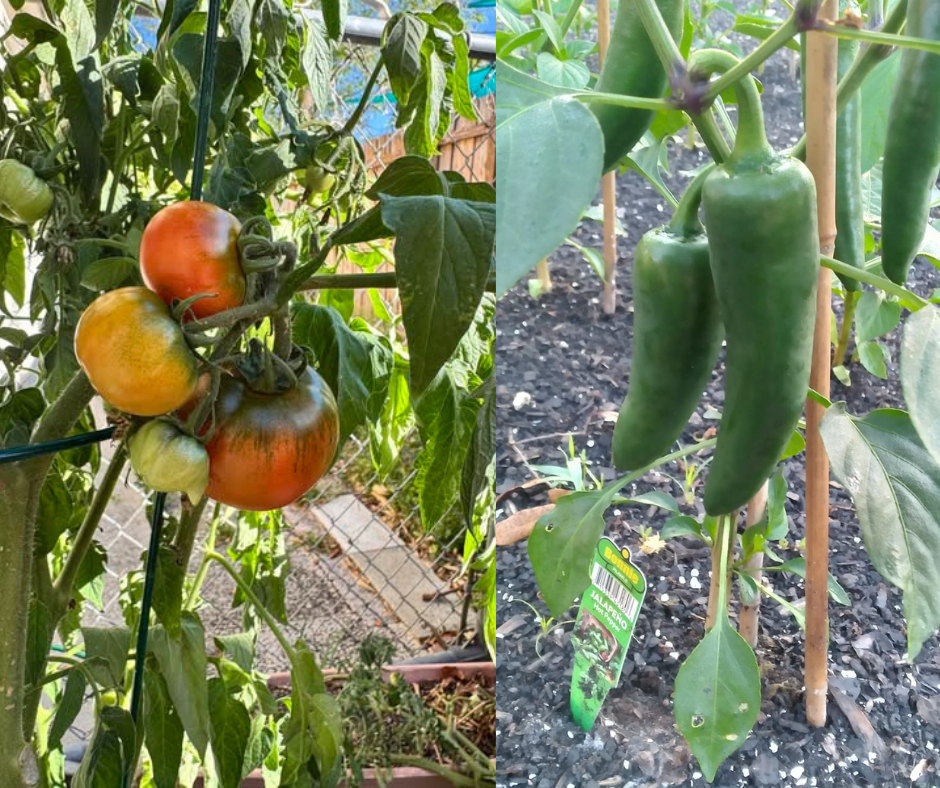
Companion planting is a time-honored gardening technique that involves growing different plants together to benefit one another. When it comes to tomatoes and peppers, selecting the right companions can help boost yields and naturally repel pests. In this article, we will explore the 10 best companion plants for tomatoes and peppers, providing you with valuable insights to enhance your garden’s productivity and health.
The Benefits of Companion Planting
Companion planting offers a range of benefits for your garden, including:
- Pest Control: Some companion plants help repel pests, reducing the need for chemical interventions.
- Improved Yields: Certain companions can enhance the growth and productivity of tomatoes and peppers.
- Soil Health: Different plants have varying root structures, which can improve soil aeration and nutrient uptake.
10 Best Companion Plants for Tomatoes and Peppers
1. Basil: The Guardian Angel of Flavor: This fragrant herb isn’t just a culinary MVP; it’s a tomato and pepper’s BFF in the pest-repelling department. Basil releases volatile oils that confuse and repel harmful insects, creating a protective shield around your precious crops. Plus, its presence attracts beneficial pollinators like bees, ensuring your plants get the love they need to fruit abundantly.
2. Marigolds: Nature’s Bug Zappers: Don’t be fooled by their sunny disposition; marigolds are fierce warriors against harmful nematodes and aphids that plague tomatoes and peppers. Their pungent marigoldene content acts as a natural insecticide, keeping your garden pest-free without harmful chemicals. Bonus points for attracting pollinators and adding a pop of color to your veggie patch!
3. Chives: Tiny Towers of Taste and Protection: These delicate allium members pack a powerful punch when it comes to pest control. Their strong scent repels a variety of garden nasties, including aphids, whiteflies, and even tomato hornworms. But wait, there’s more! Chives also attract beneficial hoverflies, natural predators that gobble up harmful insects, creating a balanced ecosystem in your garden.
4. Nasturtiums: Jewels with a Jolt: These vibrant edible flowers aren’t just eye candy; they’re potent shields against aphids, whiteflies, and even squash bugs. Nasturtiums act as trap crops, luring pests away from your precious tomatoes and peppers, sacrificing themselves for the greater good (and providing you with delicious peppery blooms in the process!).
5. Borage: The Bumbling Bee Bonanza: This beautiful blue-flowered wonder is a magnet for beneficial pollinators like bumblebees, essential for ensuring your tomatoes and peppers get the love they need to set fruit. Borage also attracts hoverflies, natural predators that keep pest populations in check. Plus, its edible flowers add a touch of elegance to salads and summer cocktails!
6. Garlic: The Multitasking Marvel: This pungent powerhouse repels a wide range of pests, including tomato hornworms, aphids, and whiteflies. Additionally, garlic can help suppress fungal diseases that can threaten your tomato and pepper plants. Plant garlic around the base of your plants or interweave it throughout your rows for maximum impact.
7. Dill: A Fragrant Feast for Friend and Foe: While dill attracts beneficial insects like ladybugs and parasitoid wasps that prey on harmful pests, its strong aroma also confuses and repels unwanted guests. This creates a delicate balance in your garden, keeping the good guys happy and the bad guys guessing. Bonus points for adding a refreshing touch to summer salads and dips!
8. Lettuce: Living Mulch Magic: This leafy green isn’t just delicious; it acts as a living mulch around your tomato and pepper plants. Lettuce helps suppress weeds, retain soil moisture, and even regulate soil temperature, creating an ideal environment for your main players to thrive. Plus, you get a bonus harvest of salad greens throughout the season!
9. Carrots: An Underground Alliance: While you might not think of them as companions, carrots actually share a beneficial relationship with tomatoes and peppers. Carrots help loosen compacted soil, allowing tomato and pepper roots to breathe easily and access essential nutrients. In return, tomatoes and peppers release compounds that help ward off carrot flies, creating a win-win situation for both parties.
10. Beans: Nitrogen-Fixing Ninjas: These leguminous legumes are nitrogen fixers, meaning they convert atmospheric nitrogen into a form readily available to plants. This translates to improved growth and yield for your tomatoes and peppers, especially if your soil is nitrogen-deficient. Plant beans in between your tomato and pepper rows for a symbiotic garden partnership.
Incorporating companion plants into your tomato and pepper garden can have a significant impact on the health and productivity of your crops. When you carefully selecting and interplanting these 10 best companions, you can create a thriving ecosystem that naturally controls pests and boosts yields. Embracing this natural approach to gardening not only benefits your plants but also contributes to a more sustainable and harmonious environment.
